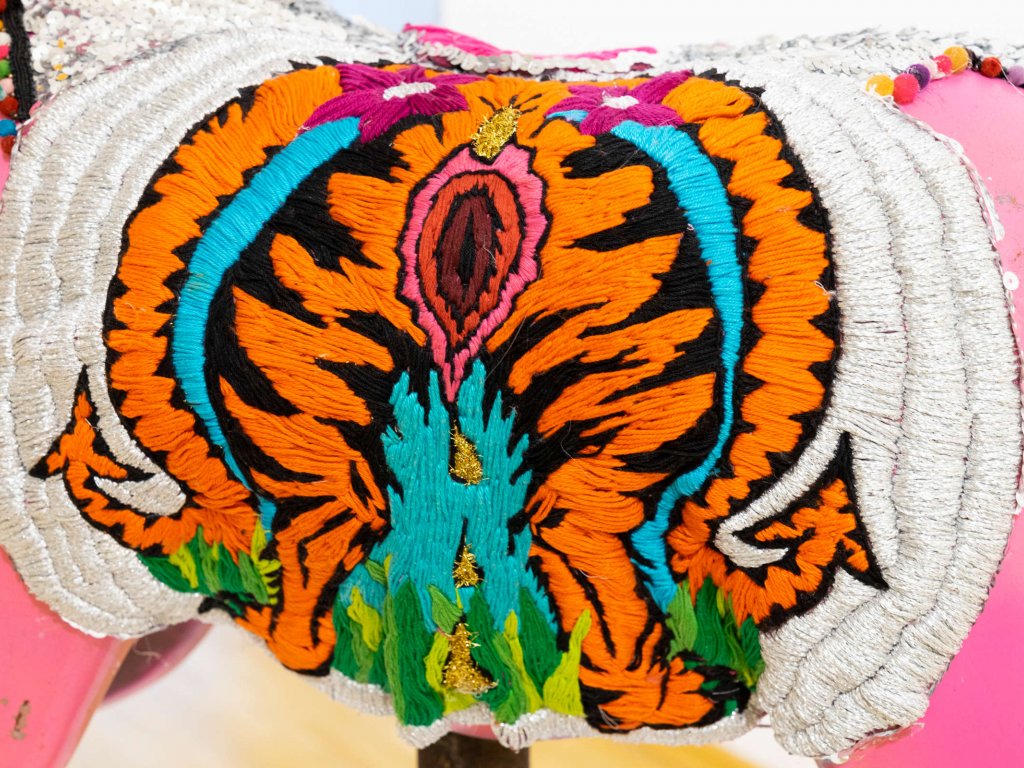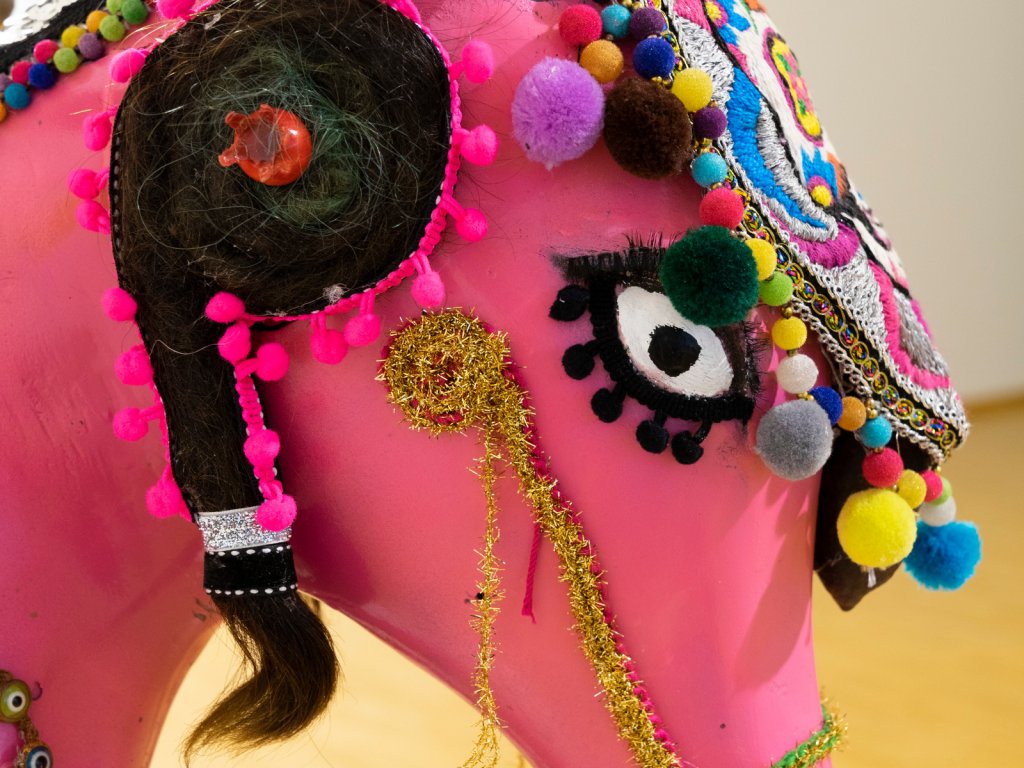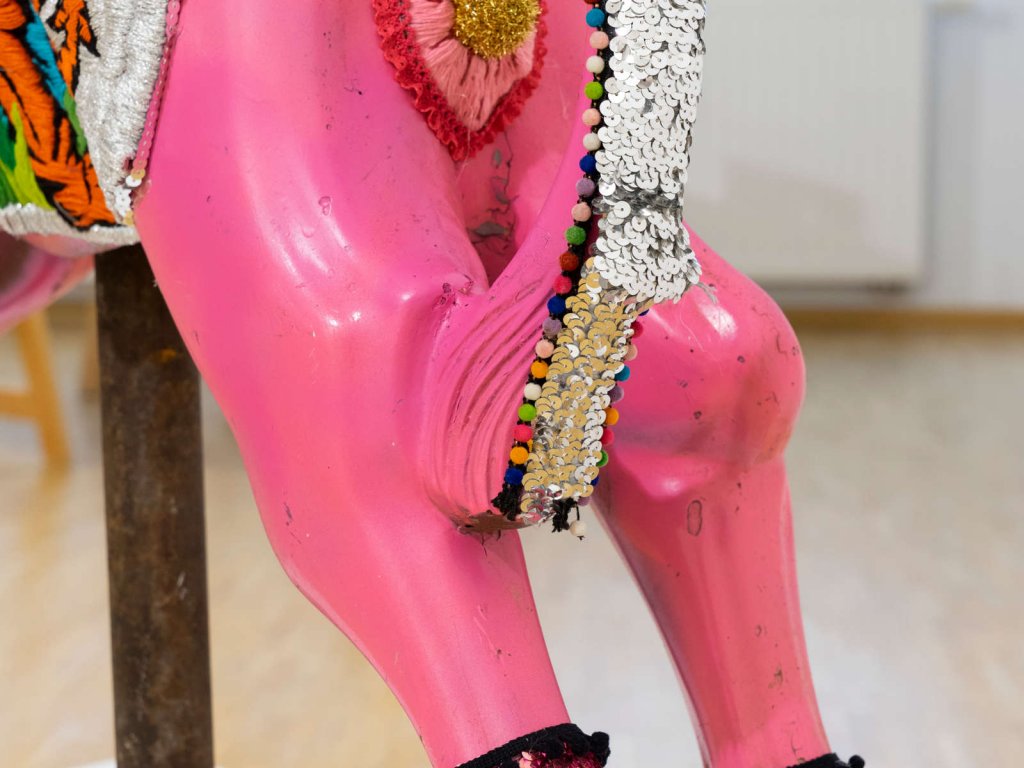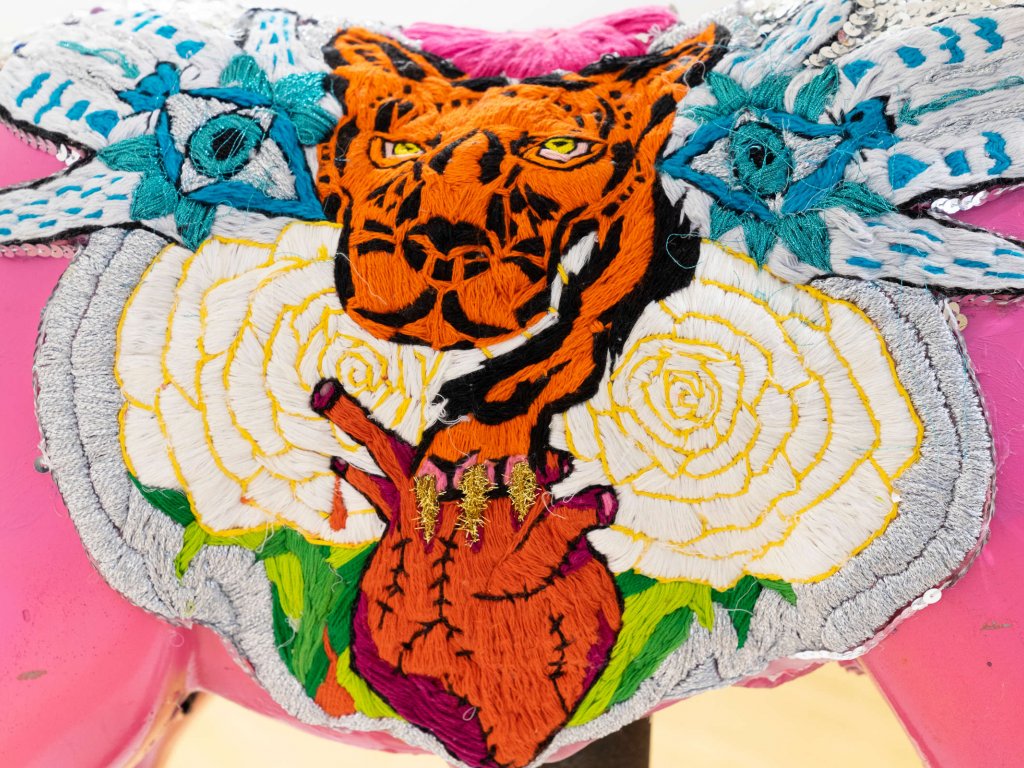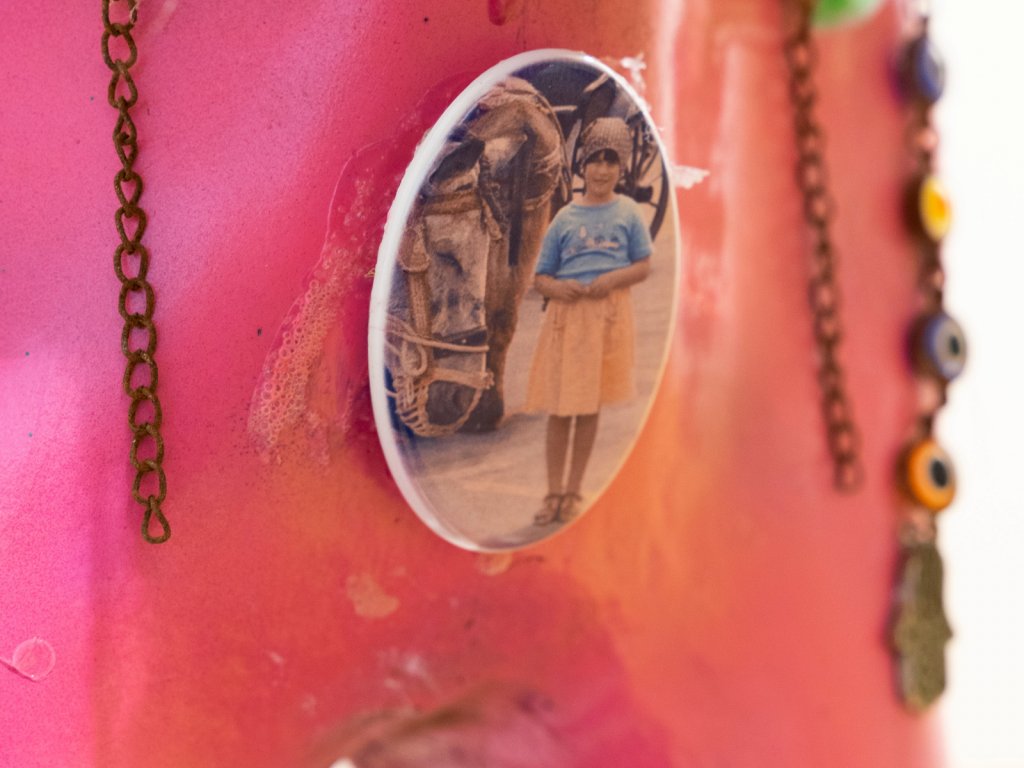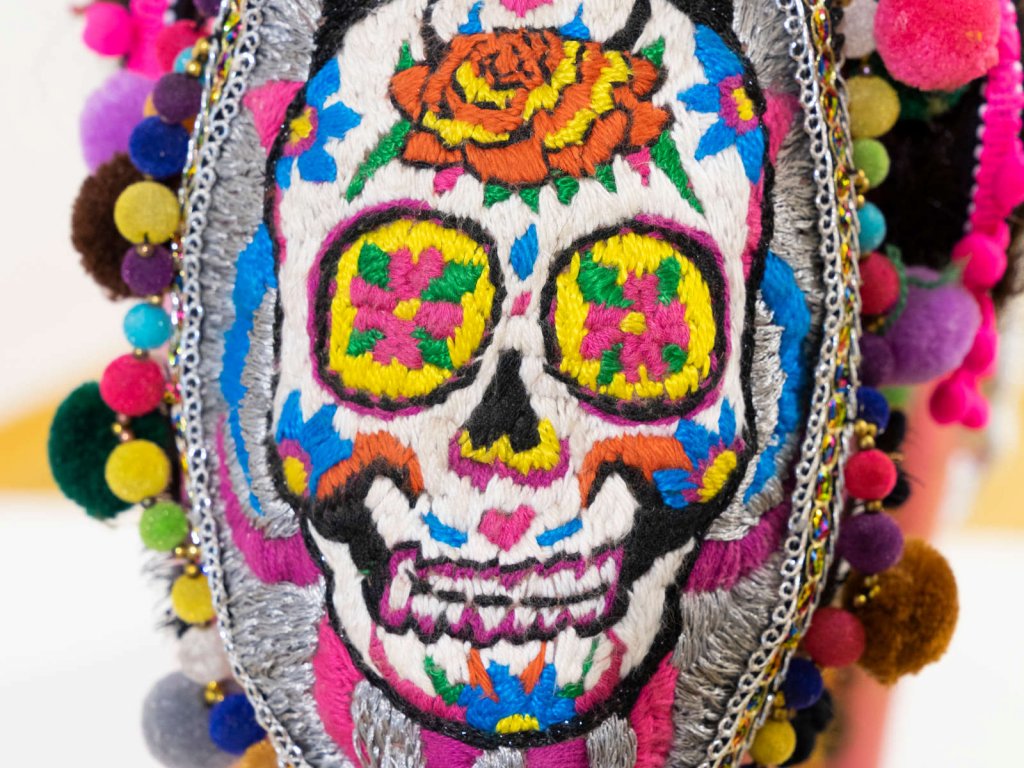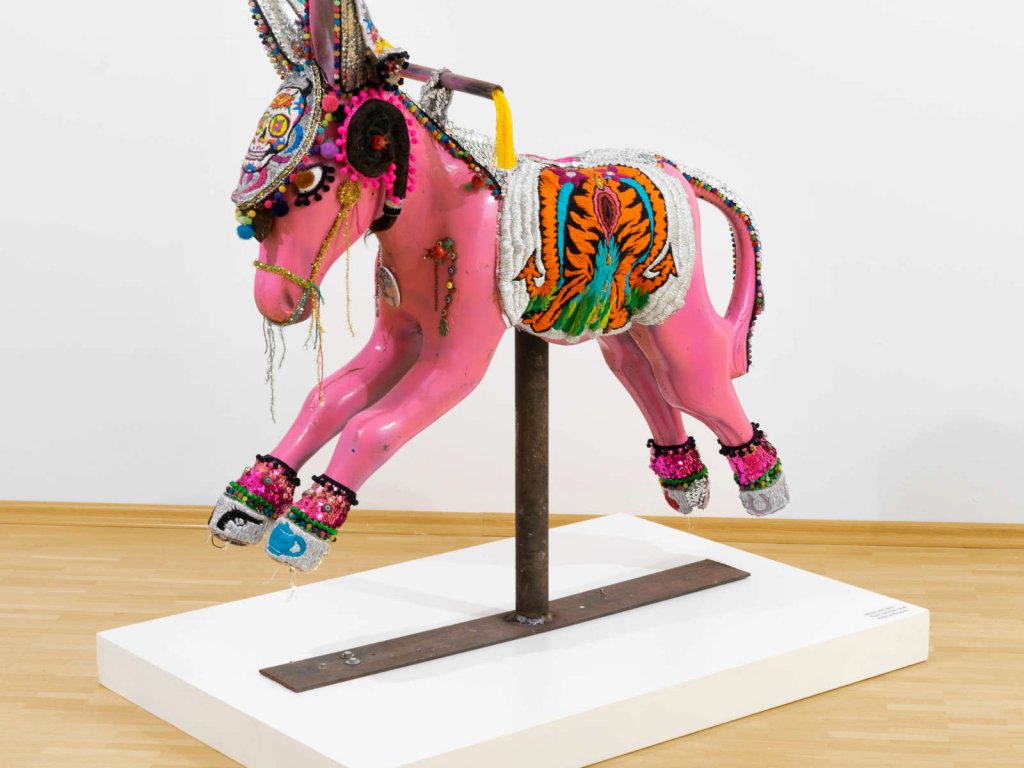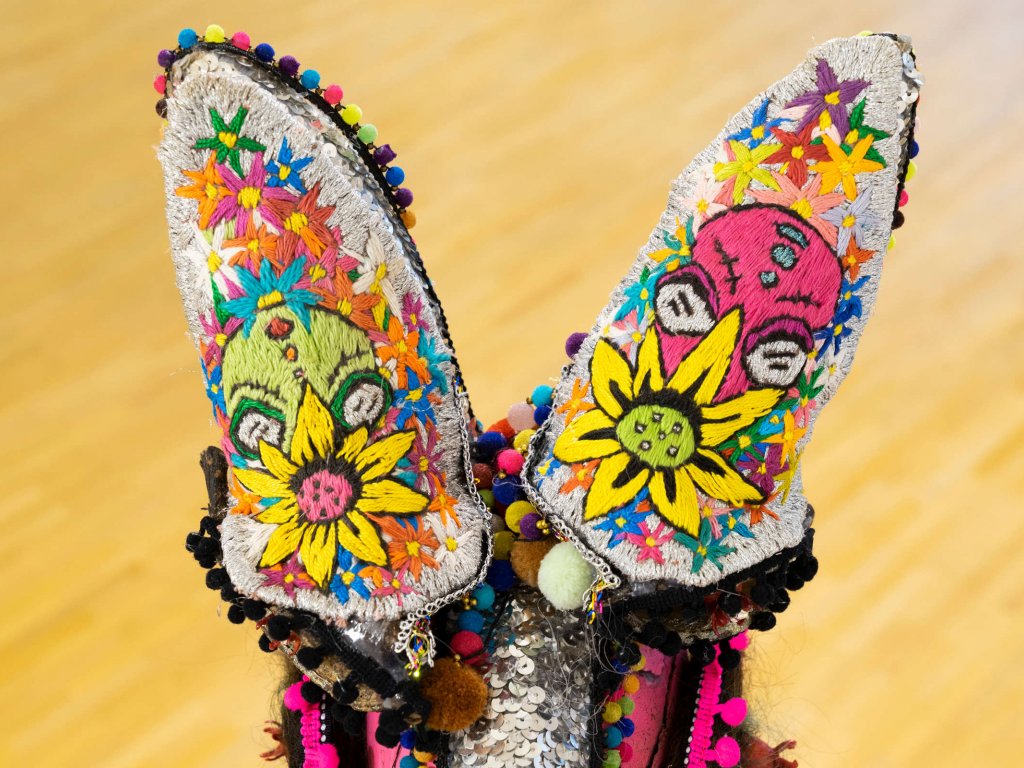Mnemotaxi
2019 sculpture
Donkeys occupy a special place in mythology, symbolism and fairy tales and are revered in many cultures of the world, but are also used as important farm animals.
The riding figure was rescued from the landfill by Renner in 2006 and has been decorated with various embroideries or crochet since 2012. In 2016, during a family visit, Renner accidentally discovered a photograph of herself as about five years old next to a donkey in Mijas/Andalusia, where donkeys are used as "burro taxis" and are provided with head and body jewellery. In her work, the artist is initially concerned with the forgotten memory of this childhood experience, which led her to embroider a donkey at another point in her life. Hence the title Mnemotaxis from the Greek, which means (spatial) orientation according to memory. For Renner, the burro-taxis are thus also taken up again in a play on words.
However, this object is not only a product of memory, but also an allusion to cultural appropriation. The work serves as a collection of lucky charms and protective amulets that recall familiar symbols and can be found in many cultures. Some of them are also freely invented by the artist, such as the flower on the back of the donkey, which actually represents the anatomy of the female mammary gland. Beneath the silver glittering tail, a golden piece of excrement peeps out from a vaginally shaped rosette, which superficially refers to the golden donkey from Grimm's fairy tale, but in the figurative sense also refers to the profitable (tourist) marketing of culture and animals.
Nicole Giese
Fotos: Franziska von den Driesch
